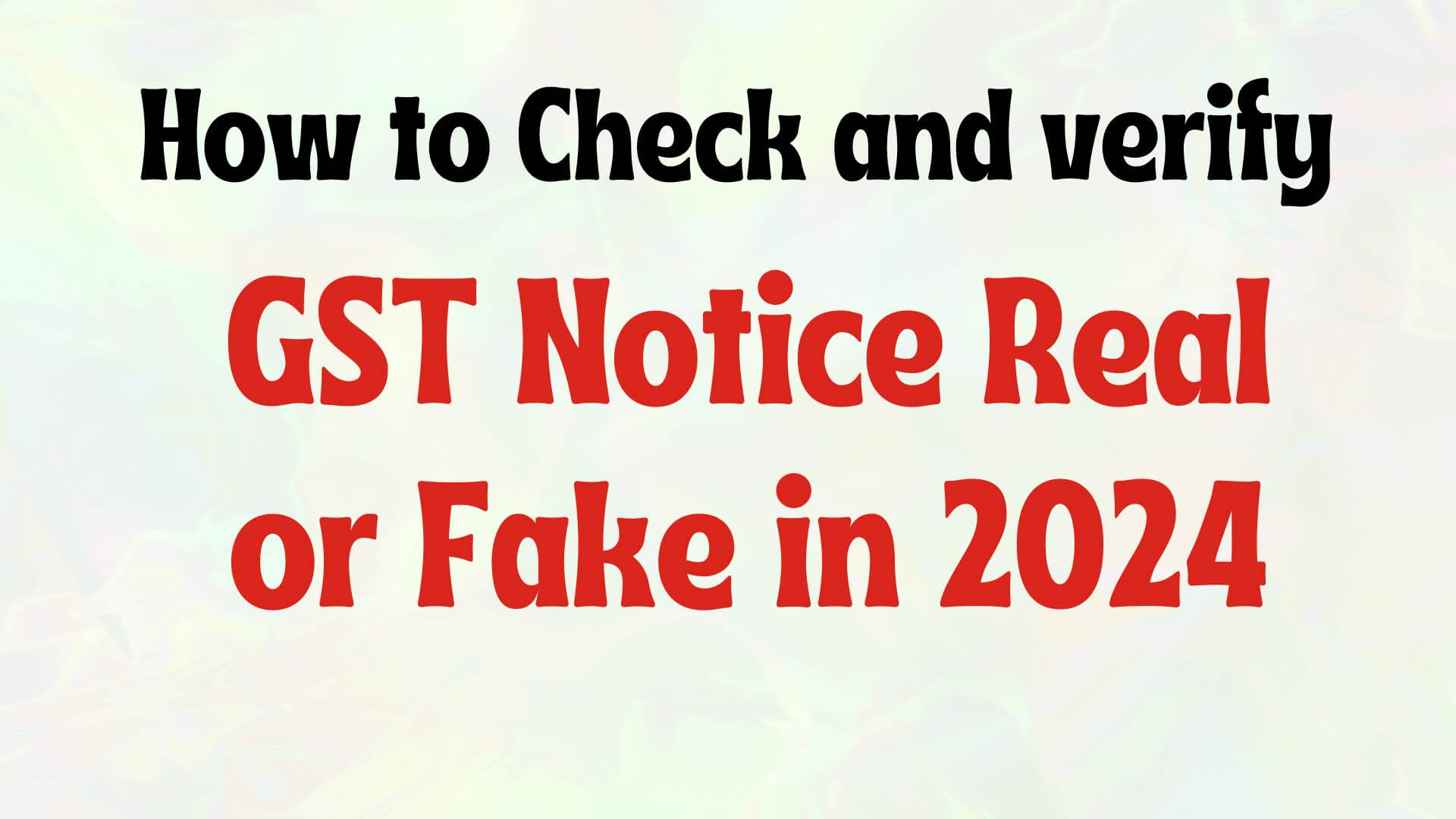What
is fake notice in GST?
A fake notice in the context of Goods and Services Tax (GST)
refers to a fraudulent or deceptive communication that falsely claims to be an
official notice from the tax authorities. These fake notices are usually
designed to trick individuals or businesses into taking actions that may not be
required or may lead to financial or personal information being compromised.
Here are some characteristics of a fake GST notice:
1. Impersonation of
Authorities:
Fake notices often impersonate government tax authorities,
claiming to be from GST departments, tax offices, or similar agencies.
2. False Information:
The notice may contain inaccurate or misleading information
about tax liabilities, penalties, or compliance issues.
3. Unusual
Communication Channels:
Communication may be through unofficial channels such as
personal email addresses, unofficial websites, or messages from unknown
sources.
4. Urgency and
Threats:
Fake notices often create a sense of urgency, pressuring
recipients to take immediate action. They may threaten severe consequences if
the recipient does not comply quickly.
5. Unusual Payment
Requests:
Fraudulent notices may request payments through
unconventional methods, such as wire transfers, cryptocurrency, or other
non-standard payment options.
6. Spelling and
Grammar Errors:
Fake notices may contain spelling mistakes, grammatical
errors, or use language that is not consistent with official communications.
7. No Verification
Details:
Legitimate notices usually provide details for verification,
such as contact information, official website links, or a reference number.
Fake notices may lack these details.
8. No Presence on
Official Platforms:
A fake notice may not be reflected on the official GST registration portal, and the details mentioned may not match the records on the official
government platforms.
How to Check and verify
GST Notice real or fake in 2024?
It's essential to be cautious and verify any unexpected or
suspicious notices received. Always cross-check the information with official
channels, and if in doubt, contact the relevant tax authorities directly
through official contact details. Additionally, seeking advice from tax
professionals or legal experts can help confirm the legitimacy of a notice.
To determine if a Goods and Services Tax (GST) notice is
real or fake, you can follow these steps:
1. Verify Sender's
Details:
Check the details of the sender, such as the name, address,
and contact information. Official communication from tax authorities should
have accurate and complete information.
2. Check the GSTIN:
Ensure that the Goods and Services Tax Identification Number
(GSTIN) mentioned in the notice is valid. You can verify GSTIN on the official
GST portal or through other official channels.
3. Mode of
Communication:
Official GST communications are usually sent through
authorized channels, such as the GST portal, official letters, or emails from
the official domain. Be cautious of notices received through unsecured email
addresses or unknown sources.
4. Verify Notice
Format:
Compare the format and language of the notice with other
official communications you may have received from the tax authorities. Genuine
notices usually adhere to a standard format.
5. Check for Spelling
and Grammar:
Official communications are expected to be well-written and
free from spelling and grammatical errors. Be suspicious if you notice language
issues.
6. Cross-Check on GST
Portal:
Log in to the official GST portal and check if there are any
notifications or notices posted there. Genuine notices are likely to be
reflected in your GST portal account.
7. Contact the GST
Helpline:
Reach out to the GST helpline or customer support to inquire
about the authenticity of the notice. They can provide guidance and confirm if
the notice is legitimate.
8. Seek Professional
Advice:
If you have any doubts, it's advisable to consult with a tax
professional or legal expert who can review the notice and guide you on the
appropriate course of action.
9. Avoid Clicking on
Suspicious Links:
Do not click on any links or download attachments from the
notice unless you are certain about its authenticity. Legitimate tax notices
typically do not contain links leading to external websites.
10. Beware of Threats
or Urgency:
Be cautious if the notice threatens immediate action or
creates a sense of urgency. Official notices usually provide a reasonable
timeframe for response.
If you still have doubts after following these steps, it is
strongly recommended to contact the official GST helpline or seek professional
advice to verify the authenticity of the notice.
Certainly! Here are five frequently asked questions (FAQs)
related to fake Goods and Services Tax (GST) notices:
FAQs on GST
on How to
Check and verify GST Notice real or fake
1. What is a Fake GST
Notice?
Answer: A fake GST notice is a fraudulent communication that
falsely claims to be an official notice from tax authorities. These notices
often contain misleading information regarding tax liabilities, penalties, or
compliance issues, with the intention to deceive individuals or businesses.
2. How Can I Identify
a Fake GST Notice?
Answer: Fake GST
notices may be identified by checking for unusual communication channels, false
information, urgency or threats, lack of official verification details, and
discrepancies in the payment requests. Legitimate notices adhere to standard
formats and can be verified through official channels.
3. What Should I Do
If I Receive a Suspected Fake GST Notice?
Answer: If you suspect that you have received a fake GST
notice, it is important not to panic. Avoid clicking on any links or making
payments mentioned in the notice. Verify the notice through official channels,
such as the GST portal or helpline. Consult with tax professionals or legal
experts for guidance.
4. How Can I Confirm
the Authenticity of a GST Notice?
Answer: To confirm the authenticity of a GST notice,
cross-check the information on the official GST portal, verify the sender's
details, and contact the official GST helpline. Genuine notices should have
accurate sender information, adhere to a standard format, and be reflected on
the official government platforms.
5. What are the Risks
of Responding to a Fake GST Notice?
Answer: Responding to a fake GST notice can pose various
risks, including financial loss, identity theft, and unauthorized access to
personal or business information. It is crucial to exercise caution, verify the
notice's authenticity, and seek professional advice to mitigate potential
risks.
It's important to note that these FAQs provide general
guidance, and individuals facing specific situations should seek professional
advice to address their unique circumstances.

